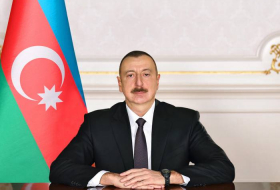"Dacic extended his full support for the work of Tagliavini and the Trilateral Contact Group. He expressed his hope that the Contact Group members and all the signatories of the Minsk documents would gather for a new round of peace consultations in Minsk as soon as possible," the statement said.
"I urge all sides involved in the conflict to stop the hostilities and return to the negotiating table. The international community expects the signatories of the Minsk documents to honour their commitments and pave the way for a peaceful resolution of the conflict," Dacic said.
A regular meeting of the Contact Group with participation of representatives of the Organization for Security and Cooperation in Europe, Russia, Ukraine, the self-proclaimed Donetsk and Lugansk People’s republics (DPR and LPR) will be held in Minsk on Friday, January 30.
The decision to make Minsk a permanent negotiating site for the Contact Group on Ukraine was made August 26, 2014 in the Belarusian capital after a Customs Union summit.
Over 4,000 people have lost their lives and hundreds of thousands have fled Ukraine’s southeast as a result of clashes between Ukrainian troops and local militias in the Donetsk and Lugansk regions during Kiev’s military operation, conducted since mid-April 2014, to regain control over parts of the breakaway territories, which call themselves the Donetsk and Lugansk People’s republics, according to UN data.
A ceasefire was agreed upon at talks between the parties to the Ukrainian conflict mediated by the OSCE on September 5, 2014 in Belarusian capital Minsk two days after Russian President Vladimir Putin proposed his plan to settle the situation in the east of Ukraine.
Numerous violations of the ceasefire, which took effect the same day, have been reported since.
A memorandum was adopted on September 19, 2014 in Minsk by the Trilateral Contact Group on Ukraine comprising representatives of Ukraine, Russia and the OSCE. The document outlined the parameters for the implementation of commitments on the ceasefire in Ukraine laid down in the Minsk Protocol of September 5, 2014.
The nine-point memorandum in particular envisioned a ban on the use of all armaments and withdrawal of weapons with the calibers of over 100 millimeters to a distance of 15 kilometers from the contact line from each side. The OSCE was tasked with controlling the implementation of memorandum provisions.
A "day of silence" in eastern Ukraine began at 09:00 a.m. local time (0700 GMT) on December 9. It was seen as another attempt by both parties to the intra-Ukrainian conflict to put an end to hostilities. Both Kiev and the self-proclaimed republics voiced the necessity to start withdrawal of heavy armaments, swap prisoners and demilitarize the region.
The situation in the region deteriorated when a passenger bus bound from Donetsk to Zlatoustovka was shelled on January 13. Twelve civilians were killed and 16 wounded.
More about:
















































